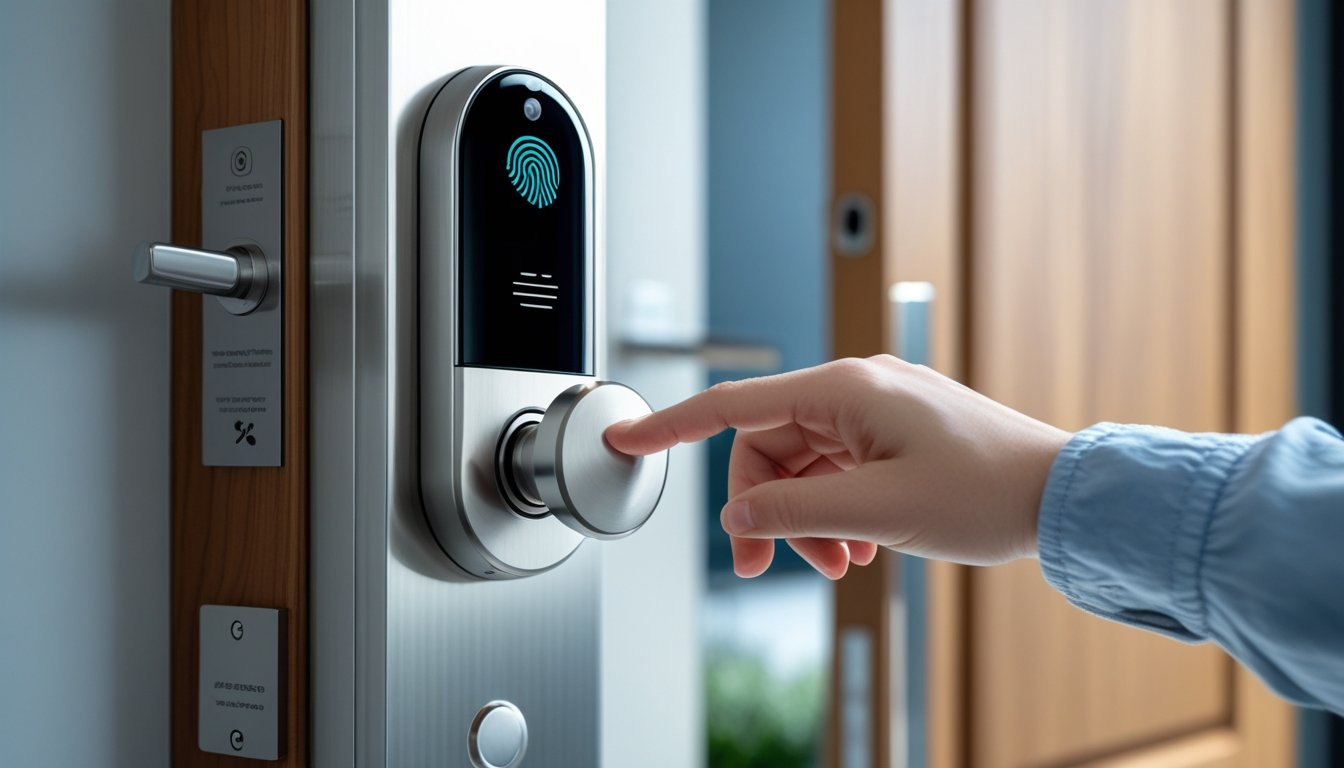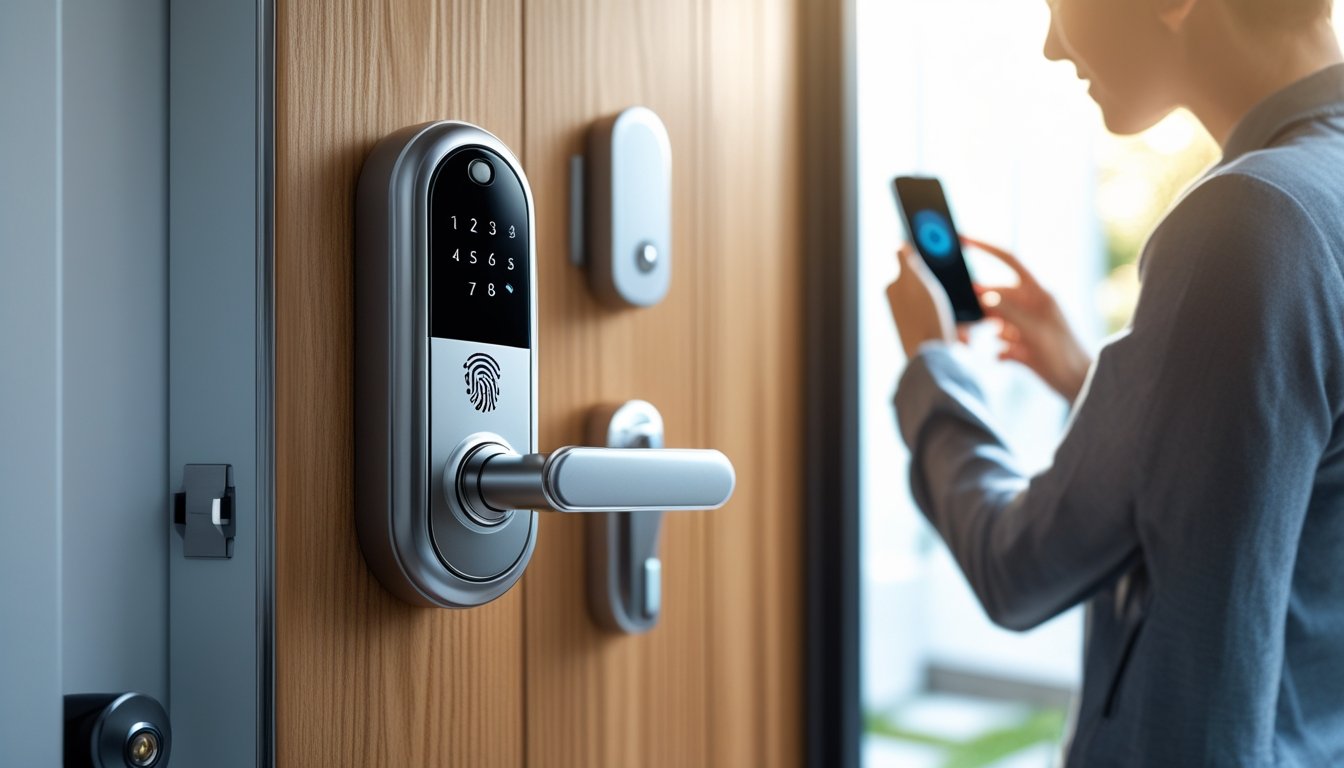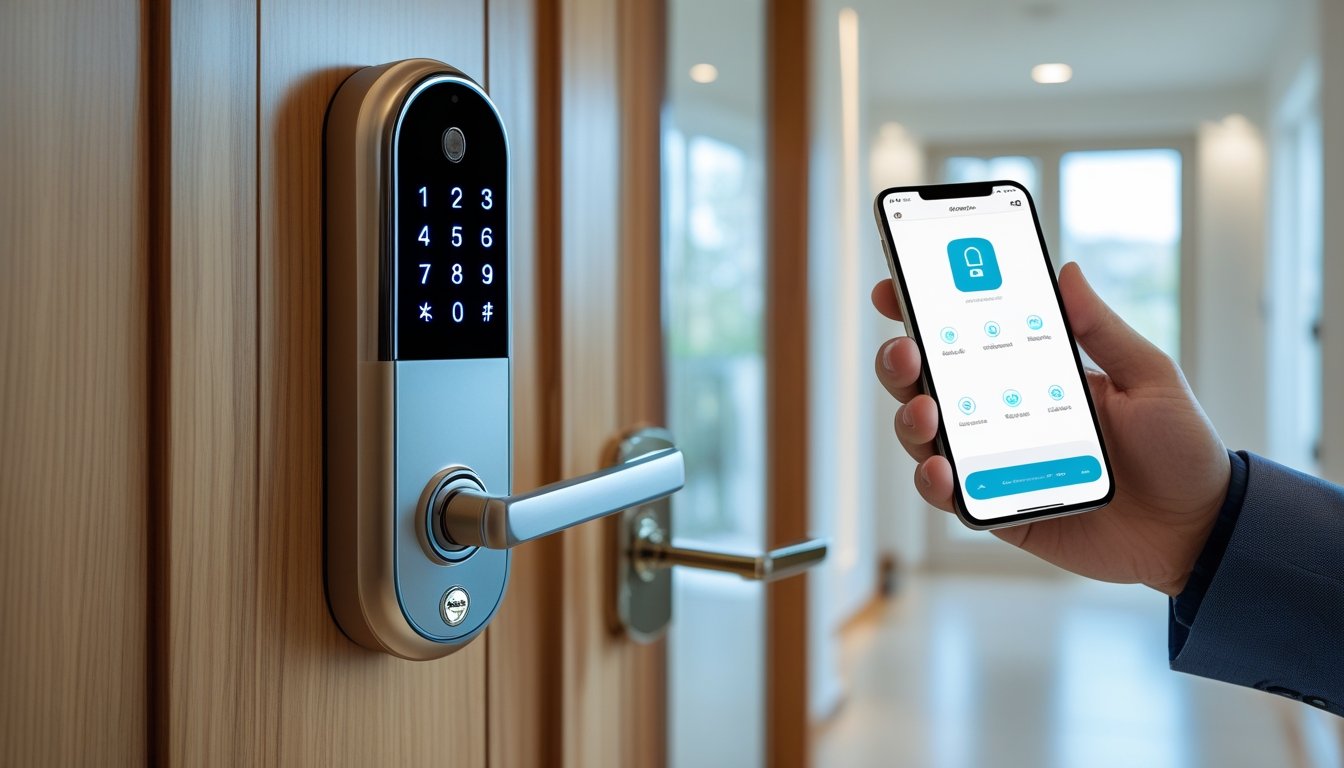Late updated: 04 Oct 2025 12:10
Written by: Elena Prescott
Understanding Smart Lock Security Basics: Key Considerations
As our homes become more interconnected, smart locks have captured significant attention for their role in enhancing security without compromising convenience. Smart locks are electronic devices that allow us to control access to our homes using methods beyond traditional keys, such as smartphones, keypads, or even biometrics. Their popularity is not only due to the convenience they offer but also the advanced security features they integrate, which are designed to give us peace of mind.

At the heart of smart lock security is a blend of technology and practicality. By utilising secure communication protocols and encryption, these devices offer robust defences against unauthorised access. Integration with smart home systems enables us to control and monitor entry remotely, making these locks a crucial component of modern home security.
Understanding the basics of smart lock technology, from installation to usage, can greatly influence how we protect our living spaces. This article aims to demystify the technical aspects, allowing us to make informed decisions for safer, smarter homes.
Key Takeaways
- Smart locks enhance security with electronic access control.
- Secure protocols and integration are key features.
- Smart lock basics help improve home safety.
Core Principles of Smart Lock Security

In today's digital age, smart locks have become integral to enhancing home security, combining convenience with advanced technology. From keyless entry to intricate security protocols, these devices offer a range of features designed to secure our homes effectively.
Keyless Entry and Access Methods
Keyless entry significantly enhances our security experience, offering various access methods beyond traditional keys. PIN codes, smartphone apps, and even biometric features like fingerprint recognition enable swift and secure access.
Smart locks integrate with voice command systems like Alexa and Google Home, allowing control via simple voice commands. For those who prefer a tactile method, keypads offer an easy alternative, while those seeking remote access can rely on apps to unlock doors from anywhere.
Our interaction with smart locks extends to remote control capabilities through smartphone apps. This integration empowers us to grant access or lock doors instantly, providing peace of mind. Digital keys stored in our devices ensure security and eliminate the need for physical copies.
Connectivity Technologies and Integration
Connecting smart locks to our smart home systems widens their functionality and enhances security. Most smart locks utilise Bluetooth for direct local connections, ideal for automatic locking when we're near.
For more extensive control, a Wi-Fi connection is essential, enabling us to manage locks remotely. Secure Wi-Fi configurations protect against unauthorised access, ensuring that our smart locks remain safe from internet-based threats.
The compatibility with Z-Wave and Apple Home further enhances integration, synchronising with other smart devices for a seamless experience. This interconnectedness means a smart lock can be part of a comprehensive home automation setup. Regular updates from smart lock manufacturers maintain the lock's software, supporting enhanced battery life and functionality.
Authentication and Security Protocols
Authentication forms the backbone of smart lock security, ensuring only authorised individuals gain access. Encryption protocols secure communications between the lock and devices, safeguarding against potential breaches.
Smart locks employ multiple authentication methods, such as PIN codes, biometric data like facial recognition, and verified smartphone apps. This layered security approach increases resilience against unauthorised entry.
Smart lock manufacturers continuously update security protocols to address potential vulnerabilities. Regular software updates are crucial, safeguarding our homes against evolving threats. By integrating these advanced security measures, smart locks offer robust protection while maintaining ease of use.
Access Control Features and Smart Home Integration
Exploring smart locks involves understanding how they offer temporary access options and integrate with other smart devices, enhancing the modern home's convenience and security. Critical factors such as temporary access codes and compatibility with smart home systems are central to these discussions.
Temporary Access and Digital Credentials
With smart locks, we can grant temporary access to guests, service providers, or family members. Temporary access codes can be generated through a mobile app, providing a flexible and secure way to manage entry. For example, we can create a code for a cleaner or dog walker, which expires after a set period.
Issuing digital credentials allows us to manage access without needing to change physical locks. This capability is particularly valuable for host services like Airbnb, where guest access can be streamlined and automatically limited to their stay duration.
Adding these features helps us maintain control over who enters our home, thus enhancing home security. It's a significant shift from traditional systems and requires understanding how to manage and monitor these digital codes effectively.
Smart Home System Integration
Smart integration allows us to synchronise our locks with devices like Amazon Alexa and other smart home systems. This synergy offers hands-free operation, enhancing comfort and security. With voice commands, we can lock and unlock doors without lifting a finger.
Moreover, integration ensures our smart locks work in harmony with other smart home devices such as lights and cameras. For instance, we can set routines that turn on lights or cameras when someone enters.
This cohesive setup not only boosts security but also offers an unmatched level of convenience. Whether through customised routines or alerts, integration exemplifies the practical benefits of a well-connected home ecosystem.
Enhancements and Limitations
Smart locks come with notable enhancements, such as remote access control and real-time monitoring through mobile applications. We can receive alerts when our lock is accessed, enabling us to monitor and control entry from anywhere. This feature becomes instrumental in managing our home’s security system.
However, smart technology is not without its limitations. Internet connectivity is essential, meaning unreliable connections can impact lock performance. Power backups ensure functionality during power outages, but they are an additional requirement.
Moreover, privacy concerns arise due to smart lock data storage, which requires careful management. It's vital that we understand encryption standards and manufacturer practices to safeguard our information effectively.
Frequently Asked Questions

Smart locks offer an innovative approach to securing homes, integrating advanced technology to provide keyless access and enhanced control over who can enter a property. This section addresses some common queries surrounding the security features and functionality of smart locks.
What are the main types of smart locks available on the market?
Smart locks come in various forms. The most popular types include deadbolt replacement locks, which fully replace existing deadbolts, and retrofit locks that are added to existing lock hardware. Each type offers different features, making it essential to choose one that suits your specific needs.
How do smart locks enhance home security compared to traditional locks?
Smart locks provide keyless entry, eliminating the risk of lost or copied keys. Many models include features such as remote access, allowing homeowners to lock or unlock doors from anywhere. They often come with activity logs, enabling better monitoring of entry and exit times.
What methods do smart locks use to authenticate users?
Authentication methods for smart locks vary. Common approaches include Bluetooth connectivity, Wi-Fi access, numerical codes via keypads, and biometric verification like fingerprint scanning. These methods enhance security by controlling access more precisely than traditional keys.
Are smart locks vulnerable to hacking, and how can these risks be mitigated?
While no lock is completely immune from tampering, smart locks can be vulnerable to hacking like any digital device. To mitigate risks, it's crucial to use strong, unique passwords, update the device firmware regularly, and ensure secure network connections.
How can one ensure the compatibility of a smart lock with existing home automation systems?
Compatibility is crucial for integrating smart locks into a smart home ecosystem. We recommend checking the lock’s specifications for compatibility with popular home automation platforms like Apple HomeKit, Amazon Alexa, or Google Assistant. It's also wise to consult user reviews and manufacturer guidelines.
What should be considered when choosing a smart lock for outdoor and adverse weather conditions?
When selecting a smart lock for outdoor use, consider its weather resistance features. Look for locks with high waterproof and dustproof ratings, such as IP65 or higher, which indicate the device can withstand rain and dust. Robust materials like stainless steel can offer additional durability.
